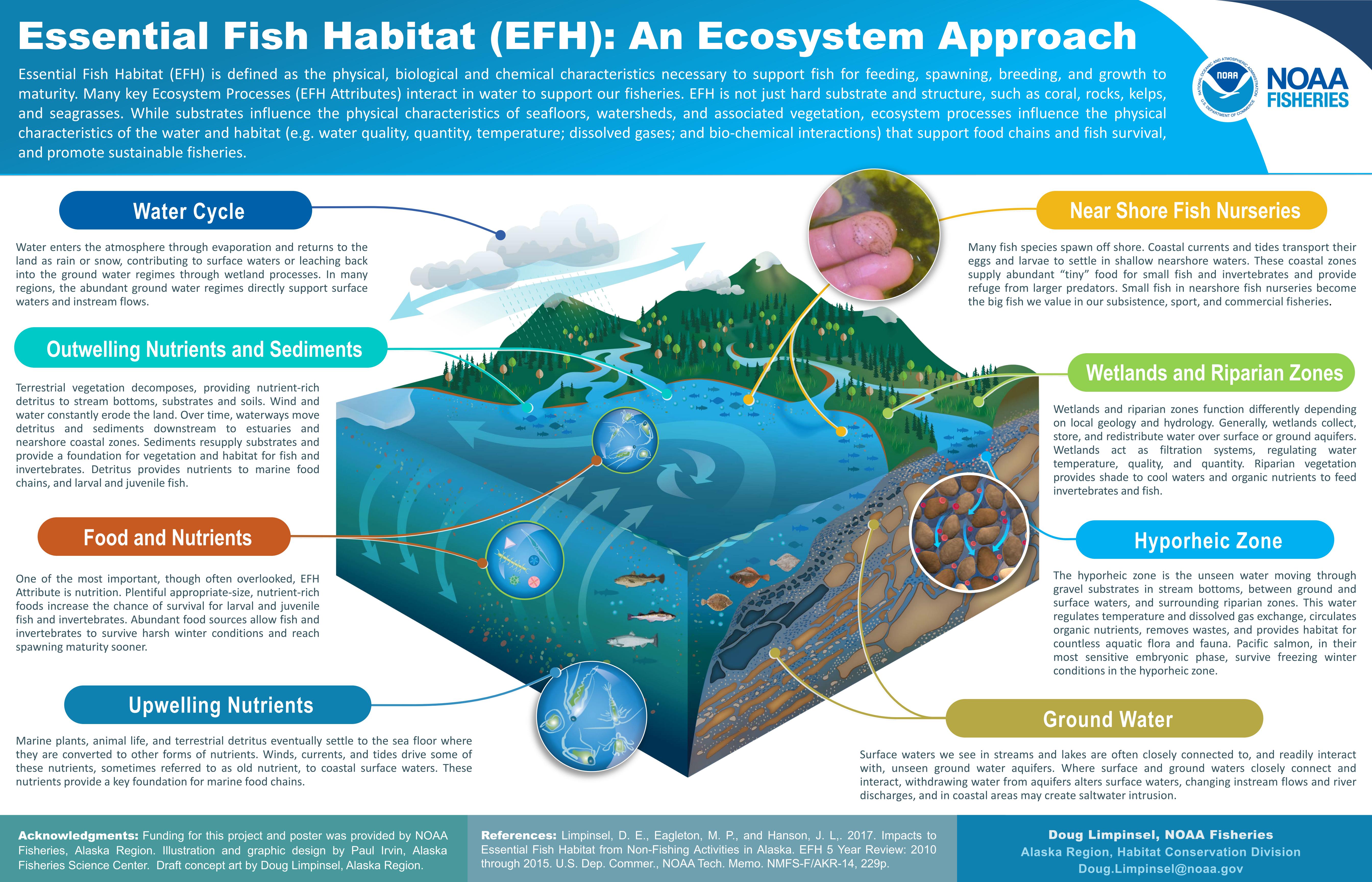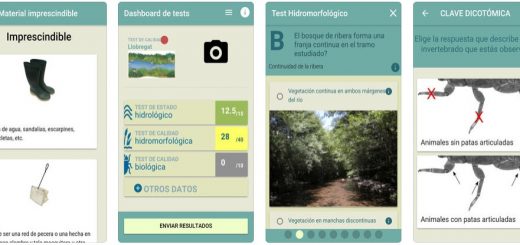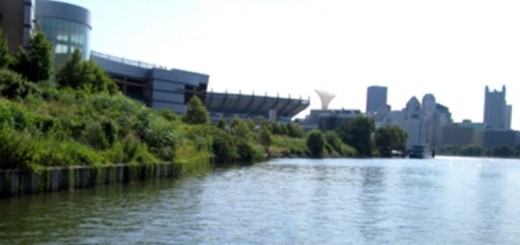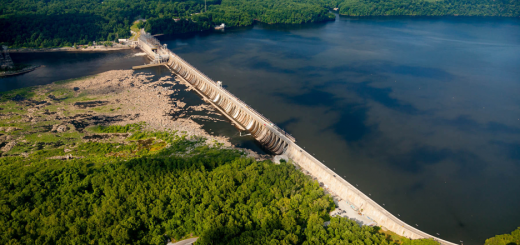Multiple Species, Multiple Habitats: NOAA’s New Poster Highlights an Ecosystem Approach
Anyone who has attempted to describe their fisheries science project to their grandmother at Thanksgiving has experienced the difficulty of science communication, and educating about fish habitat is no exception. After all, there are more fish species than all other vertebrates combined, and each of those species has its own habitat requirements. Mastering the nuances of a scientific subject often requires highly technical language, and despite attempts at a more simplified vocabulary (e.g. Munroe’s “Simple Writer”) the complexities of habitat management decisions are easily lost in translation. These communication difficulties are especially true when defining Essential Fish Habitat (EFH) because people often assume it refers to physical structures such as gravel, mangroves, or coral. However, EFH includes the physical (e.g. depth, temperature), biological (e.g. species interactions), and chemical (e.g. available oxygen and other dissolved gases) environment necessary for fish to grow and breed.
The identification and designation of EFH is conducted by Regional Fishery Management Councils and the Secretary of Commerce as outlined in the Magnuson-Stevens Act of 1976. Online tools such as NOAA’s EFH Mapper provide information to the public about the location of EFH as well as the available data for particular species. Within a region, information about EFH for each fish species is included in a fisheries management plan, which is updated every five years. This information can be used to determine if projects at the Federal or state level (e.g. roadways, oil exploration, port development) can potentially damage habitat, and also provide guidelines on how to mitigate the effects of these projects. These fisheries management plans are unique from region to region, making it difficult to describe EFH in general terms.
This is why Doug Limpinsel, who works at the Habitat Conservation Division of NOAA in the Alaska region, is developing a series of informational posters in response to requests from educators, First Nations, and the general public. Doug’s first poster (Figure 1), designed by himself and Paul Irvin at the Alaska Fisheries Science Center, clearly and simply describes the attributes of EFH. The poster illustrates the physical environment, but more importantly, emphasizes ecosystem processes and how fish use multiple environments throughout their life.

Shifting the focus to whole ecosystems ignites a discussion of the underlying processes that contribute to the physical, biological, and chemical components of EFH. This ecosystem perspective that includes multiple species and the connections between different habitats may seem intuitive to trained scientists and fisheries managers. Unfortunately, many conversations about the designation of EFH have demonstrated that we are not doing a good enough job communicating to the public how complex the term “habitat” can be. Doug’s poster is a great springboard into habitat topics that are rarely discussed outside of scientific circles, such as the vital role of nutrients and food in quality fish habitat. For example, have you ever wondered why the coasts have so many fish and other animals like birds and seals? The poster illustrates how rivers deliver organic material and nutrients like phosphorous and nitrogen to coastal zones (called “outwelling”) and how ocean currents stir up nutrients from the seafloor and deliver them to the shallower coastal zones (called “upwelling”). Outwelling and upwelling create a habitat that is full of food! The poster also helps to explain other neat topics in fish habitat, like ground water aquifers, the hyporheic zone (ground water mixes with surface water!), wetlands, and the riparian zone.
Doug’s poster has been used by educators in Alaska and Seattle, and is available on NOAA’s webpage describing EFH in Alaska. Doug hopes to develop three more posters that each focus on the ecosystem processes encompassed within different ecotones, specifically rivers, estuaries, and the marine system. His work will facilitate conversations between scientists, managers, the general public, and hopefully inspire future fisheries scientists.
References:
https://www.habitat.noaa.gov/protection/efh/efhmapper/index.html
Doug Limpinsel and Paul Irvin. NOAA Fisheries. https://www.fisheries.noaa.gov/resource/document/essential-fish-habitat-ecosystem-approach
Randall Munroe, https://xkcd.com/simplewriter/



